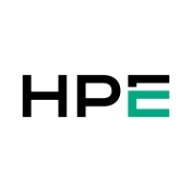

Zerto and Cohesity DataProtect are significant players in data protection and recovery solutions. Based on user reviews, Cohesity DataProtect is perceived to have more advanced features and higher overall satisfaction despite its higher pricing.
Features: Zerto is praised for its robust disaster recovery capabilities, continuous data protection, and straightforward deployment. Cohesity DataProtect offers comprehensive backup, seamless integration, and effective data management. Users prefer Cohesity's broader feature set over Zerto's specialized capabilities.
Room for Improvement: Reviews indicate that Zerto could benefit from enhanced scalability, easier management, and improved support responsiveness. Cohesity DataProtect users suggest improvements in support responsiveness, reporting tools, and scalability. Zerto's primary limitation is scaling, while Cohesity's support and reporting are seen as areas needing enhancement.
Ease of Deployment and Customer Service: Zerto is commended for its straightforward deployment and effective customer support. Cohesity also enjoys positive feedback for deployment ease but faces criticism for its customer service. Cohesity DataProtect provides a smoother deployment experience, but Zerto's superior customer service makes a difference.
Pricing and ROI: Zerto users find the setup cost reasonable with good long-term ROI. Cohesity DataProtect, despite its higher initial setup cost, is considered worth the investment due to the extensive features and capabilities it offers. Cohesity's higher cost is justified by its comprehensive functionality, yielding better ROI over time.
Using Cohesity DataProtect is easier to manage, and it simplifies various components into one architecture, reducing the need for extensive human resources to manage backups.
Before, it was a huge cost. It was several thousand dollars to do a DR test, whereas now, I click a button.
It saves us a lot of time and gives us the ability to perform other DR plans for other systems.
It's not only in the cloud; it's DR as a service, which means that the recovery operations are performed by a dedicated team specializing in this area.
The support can depend on the region, and for larger customers, I advise having a Technical Account Manager for better assistance.
I have never had an issue that was not resolved, and I have never been in a situation where they did not respond.
I would give them a rating of ten because it represents the highest level of support based on the technical knowledge of the support team, response time, and effectiveness of the provided resolutions.
When I open a ticket, I usually get a call within an hour or two.
Cohesity DataProtect is built on a scale-out architecture, which means it can effectively scale to meet various needs.
I would rate it a ten out of ten for scalability.
Customers need to follow good engineering practices for optimal product use.
By adding more hosts and installing VRAs on each, tasks can be efficiently managed.
On the whole, any problems were more related to hardware limitations rather than issues with Cohesity DataProtect itself.
I promptly delete the malfunctioning elements and set them up again to resume replication, ensuring stability.
The ease of use was so good with Zerto that they were able to migrate things much quicker.
It is very reliable.
While there are improvements to be made, such as providing support for older systems like IBM iSeries and tandem systems from HP, the solution overall shifts from older methods to modern practices.
If I have 350 objects that I am protecting, I would like Zerto to be able to fire them up in one order, rather than having to manually bring them up in a sequence.
If the host has a lot of VMs on it, there may not always be enough time to relocate all of the VMs from a protection group standpoint to other hosts before the replication appliance that Zerto uses to manage that powers itself down.
If HPE Zerto Software has it built-in where we're going to vCenter and you click on it, it will build the VPG and indicate configuration requirements, that would be amazing.
I find Cohesity DataProtect to be expensive.
If you want a good-quality tool that is robust and does a good job for you, you have to pay a higher price to get that, and Zerto is no different.
However, it can become quite expensive when you start looking at the number of workloads you have in the environment and what you would like to do.
Zerto is easier to set up and use, and it's less expensive.
The platform is based on a scale-out architecture with each node having compute, RAM, SSD, and HDD.
Some of the most valuable features of Cohesity DataProtect for me include instant mass restore, anomaly detection, and its ability to handle large data volumes effectively.
Zerto offers excellent technical support with responsive and helpful experts.
If we were attacked, I could revert to a backup from five seconds before the attack, and no one would know we were attacked.
The replication time and the minor amount of time it takes to sync a new server outside of any of my huge 40-terabyte boxes is ridiculously quick.
| Product | Market Share (%) |
|---|---|
| HPE Zerto Software | 2.3% |
| Cohesity DataProtect | 2.4% |
| Other | 95.3% |


| Company Size | Count |
|---|---|
| Small Business | 19 |
| Midsize Enterprise | 22 |
| Large Enterprise | 42 |
| Company Size | Count |
|---|---|
| Small Business | 92 |
| Midsize Enterprise | 86 |
| Large Enterprise | 193 |
What is Cohesity DataProtect?
Cohesity DataProtect is a top-level, sophisticated, software-defined backup and recovery solution created for cloud environments. Cohesity DataProtect is made to hyperscale and is one the most thorough policy-based protection solutions available on the market today.
Cohesity DataProtect melds multiple-point products into a single software that is able to be deployed as on-premise or consumed as a service.
Top Features:
Hyperscale made easy: Cohesity DataProtect improves data protection by doing away with the need for backup silos and administers backup and recovery with a single user-friendly, easy-to-understand interface. Cohesity DataProtect provides extensive 24/7 enterprise-class protection for a large, varying set of sources, including virtual and physical servers, NAS and SaaS workloads, relational and distributed databases, and traditional and containerized applications.
Super fast recovery: Cohesity DataProtect offers near-zero recovery point objectives (RPOs) and near-instant recovery time objectives (RTOs) to satisfy your business service-level agreements (SLAs). Using Cohesity Helios’ unified data plane and control plane you can immediately search and recover data on any Cohesity cluster, located anywhere. DataProtect distinctively minimizes downtime by immediately mass restoring any amount of virtual machines (VMs) to any point in time, and lowers data protection costs by as much as 70% or more.
Backup as a Service: Feel free to take advantage of the elasticity of the public cloud and the cost-effective value of Cohesity DataProtect when delivered as a service. When you choose an OPEX option, you can eliminate the need for on-premises hardware. There is a SaaS option that will allow you to very simply configure your backup workloads and immediately begin protecting your vital all-important data and applications.
It’s as easy as: sign-up, connect, and protect!
Ransomware protection: Cohesity DataProtect offers stellar recovery at scale. The solution is so intuitive, it has machine learning-based anomaly detection to stop incidents before they happen. Cohesity DataProtection can provide immutable backups, Datalock write once, read many (WORM), encryption, and role-based access control (RBAC).
Cohesity DataProtect integrates well with many of today’s top solutions, including, but not limited to:
Reviews from Real Users
One reviewer, who is head of IT infrastructure at Kampmann says, “Cohesity really is a Next-Gen Data Management Software,” and goes on to indicate that Cohesity “works flawlessly with easy replication of backups and numerous supported backup sources.”
Another user, who is a senior network engineer at a legal firm, relates that "Cohesity is a robust and feature-rich solution"
Zerto is used for disaster recovery, business continuity, data migration, and ransomware recovery, providing continuous data protection and near real-time replication. Valued for ease of use, efficient failover processes, and versatile integration, it enhances organizational efficiency, reduces errors, and boosts productivity.
We monitor all Backup and Recovery reviews to prevent fraudulent reviews and keep review quality high. We do not post reviews by company employees or direct competitors. We validate each review for authenticity via cross-reference with LinkedIn, and personal follow-up with the reviewer when necessary.